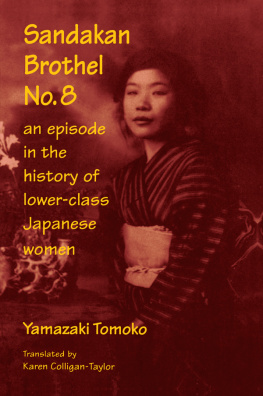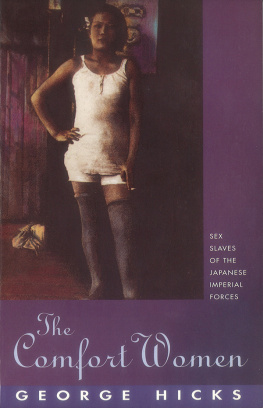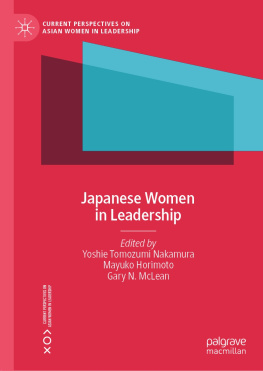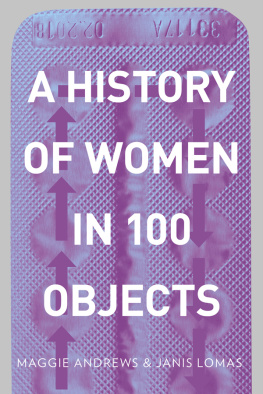Sandakan
Brothel No. 8
Publication of this book was generously supported by a grant from the Japan Foundation.
An East Gate Book
First published 1999 by M.E. Sharpe
Published 2015 by Routledge
2 Park Square, Milton Park, Abingdon, Oxon 0X14 4RN
711 Third Avenue, New York, NY 10017, USA
Routledge is an imprint of the Taylor & Francis Group, an informa business
Copyright 1999 Taylor & Francis. All rights reserved.
No part of this book may be reprinted or reproduced or utilised in any form or by any electronic, mechanical, or other means, now known or hereafter invented, including photocopying and recording, or in any information storage or retrieval system, without permission in writing from the publishers.
Notices
No responsibility is assumed by the publisher for any injury and/or damage to persons or property as a matter of products liability, negligence or otherwise, or from any use of operation of any methods, products, instructions or ideas contained in the material herein.
Practitioners and researchers must always rely on their own experience and knowledge in evaluating and using any information, methods, compounds, or experiments described herein. In using such information or methods they should be mindful of their own safety and the safety of others, including parties for whom they have a professional responsibility.
Product or corporate names may be trademarks or registered trademarks, and are used only for identification and explanation without intent to infringe.
Library of Congress Cataloging-in-Publication Data
Yamazaki, Tomoko, 1932
[Sandakan hachiban shkan. English]
Sandakan brothel no. 8 : an episode in the history of lower-class Japanese women / by Yamazaki Tomoko ; translated by Karen Colligan-Taylor.
p. cm.
An East Gate book.
Includes index.
ISBN 0-7656-0353-5 (alk. paper). ISBN 0-7656-0354-3 (pbk. :alk. paper)
1. Prostitutes, JapaneseAsia, Southeastern. I. Colligan-Taylor, Karen. II. Title.
HQ232.A5Y31613 1998
306.742095953dc21
98-18941
CIP
ISBN 13: 9780765603548 (pbk)
ISBN 13: 9780765603531 (hbk)
For Sumi
Contents
Sandakan Brothel No. 8, by Yamazaki Tomoko, reveals a neglected dimension of Japanese history and contributes to our documentation of the history of lower-class women. In her book Yamazaki records the oral history of a Japanese woman who was born at the turn of the century and sold at age ten into prostitution in North Borneo. The central issues addressed in Sandakan Brothel No. 8 continue to confront us today: the trafficking of women and the interrelated causes of this traffic, including poverty, gender inequality, famine, war, and the development strategies of certain governments. Poor families may sell daughters to a trafficker, who will buy the girl outright or provide a loan which the girl must pay off through prostitution. In some cases girls are simply kidnapped and placed in the sex industry. Women in search of work may migrate from the countryside to the city or from one nation to another, where, separated from support networks, they are especially vulnerable to deception, exploitation, and abuse. They become easy prey for traffickers.
Human rights advocates today recognize the trafficking of women of all ages as a violent criminal act, which must be countered through the cooperation of the United Nations, all governments, and nongovernmental organizations at the international, national, and local levels. Community volunteer groups that provide safe living accommodations, medical care, and counseling are increasing. However, only a small fraction of captive women manage to escape and find such assistance.1
The New Yorkbased Womens Environment and Development Organization (WEDO) reports that of 1.3 billion people living in poverty today, 70 percent are women.2 Because womens labor is undervalued, their wages may be insufficient to support themselves, let alone contribute to the support of families who do not have a place in the new economic order. As the global economy evolves, our objectives and processes should be subject to constant reassessment. It is critical that we define the benefits and costs of economic globalization, identifying those who profit the most and those who bear the greatest burden. Special consideration should be given to those whose positions are often ignored: women, children, and the land that sustains us all.
Sandakan Brothel No. 8 will provide a historical context for and a human face to some of these issues. The translators introduction examines further an evolving pattern in the traffic of women between Japan and other Asian countries.
I would like to express my deepest gratitude to my husband, Mike Taylor, for the hours he spent reading the manuscript in its many phases and making suggestions for improvement. I appreciate the advice and encouragement offered by my colleagues at the University of Alaska, historians Carol Gold and Peter Cornwall; my friend Yumi Fujiwara, a sensitive reader of womens literature; and my sister, Sumi Colligan, professor of cultural anthropology. Student assistants Reuben Loewen, Katie Raychel, and Heather Zimba freed my time for completion of the project.
The author, Yamazaki Tomoko, worked closely with me throughout the translation process, responding in detail to the many questions I faxed her and providing me with supplementary sources. It has been a pleasure to work with someone who has contributed so much to cross-cultural understanding among Asian women. Hayakawa Yoshihide, manager of the Rights Department at Bungei Shunju, facilitated negotiations between the various parties concerned in the project, and offered his support throughout the process.
To all of you: kokoro kara no kansha o moshiagemasu.
Karen Colligan-Taylor
Fairbanks, Alaska
March 1998
Notes
1. Some womens rights organizations define prostitution as work, clearly separating it from the issue of trafficking. Respecting the rights and human dignity of the prostitute, these organizations aim to provide standards of protection for women in the sex industry, in terms of health and work conditions, as well as wages. Prostitutes do not constitute a homogeneous group; nor do the victims of traffickers today always come from the lower economic classes. The reader is encouraged to contact the Global Alliance Against Traffic in Women (GAATW) for further information on human rights platforms regarding prostitution and trafficking, particularly in the Asia Pacific region.
2. Christian Science Monitor, March 13, 1998, p. 7.
Sandakan Brothel No. 8 is a pioneer work on karayuki-san, impoverished Japanese women sold into overseas prostitution between the 1860s and 1930s.1 The author, Yamazaki Tomoko (1932), has recorded the oral testimony of one such karayuki-san, whose identity she protects by giving her the fictitious name Yamakawa Saki (1900?1984).2 The narrative follows the life of Osaki,3 who is persuaded as a child of ten to accept cleaning work in Sandakan, North Borneo, then forced to work as a prostitute in a Japanese brothel, one of many such houses of assignation established throughout Asia in conjunction with the expansion of Japanese business interests.
While Osakis story depicts a time long past, its relevance for the present day is startling. In an ironic reversal, the economic and social factors that a century ago drove poor, desperate women like Osaki to lives of prostitution in Southeast Asia now impel their Asian sisters of similar circumstances to sell themselves to Japanese customers in brothels from Thailand to Japan. Moreover, through Yamazakis work, we see how the same discrimination against class and gender that promoted the traffic of Japanese women overseas in the Meiji and Taisho periods (18681926) would later justify the large-scale abduction of other Asian women as military comfort women along the Japanese front lines prior to and during World War II. In Osakis life Yamazaki has discovered a window into the lives of women who have existed at the lowest tier of the socioeconomic hierarchy. As the century turns anew, how many modern-day lives will be illuminated by the same window?













